Introduction
- Proteinase K Characteristics:
- Stable serine protease with broad substrate specificity.
- Degrades many proteins in the native state even in the presence of detergents.
- Not activated by metal ions, chelating agents (par exemple., EDTA), sulfhydryl reagents, or trypsin or chymotrypsin inhibitors.
- Stable over a wide pH range (4-12.5), with optimal activity at pH 6.5–9.5.
- Activity can be stimulated by denaturing agents (par exemple., FDS and Urea).
- Rapid denaturation occurs at temperatures above 70°C.
- Autolysis increases at alkaline pH, but some enzyme fragments maintain complete proteolytic activity even after extensive autolysis.
- Applications:
- Frequently used in molecular biology to digest unwanted proteins, such as nucleases in DNA or RNA preparations.
- Typically used at 50–200 μg/ml in nucleic acid preparations.
- Optimal conditions: pH 7.5-8.0 and 37-55°C.
- Incubation times vary from 30 minutes pour 18 heures.
Caractéristiques
| Caractéristiques | Caractéristiques |
| Masse moléculaire | 29.3kDa |
| Isoelectric Point | 8.9 |
| Apparence | Poudre lyophilisée blanche |
| Pureté | 95% (SDS-PAGE analysis) |
| Activité spécifique | ≥34 Units/mg protein |
| Temperature characteristic | The effective activity temperature is 37-70°C, and the enzyme activity at 65°C is twice that at 25°C. |
| PH characteristics | 4.0-12.0, the optimum range is ph7.5-11.5 |
| Preservation Conditions | It is recommended to store at -20°C to ensure its stability to the greatest extent (normal temperature transportation or storage will not reduce enzyme activity).
The shelf life is up to 3 years at -20°C and 2 years at 2~8°C. |
| Méthode d'utilisation | Prepare 20mg/ml with the solution, add proteinase K to the digestive solution or lysate until the final concentration is 50-200ug/ml, and incubate at 55~70°C.
Proteinase K after reaction can be removed or inactivated by magnetic bead method, column method or phenol-chloroform extraction. Protease K can be inactivated by incubation at 95°C for 3 minutes or 70°C for 15 minutes. |
| Nucleic acid residue detection | Qubit did not detect
Human DNA contamination not detected (en temps réel RAP) Bacterial DNA contamination not detected (16S universal primer PCR, 30 cycles) Fungal DNA contamination not detected (ITS Primer PCR) |
| Nuclease detection | DNase not detected
RNase not detected Nickase not detected |
| Application recommandée | Extraction d'acide nucléique, circulating DNA extraction, virus nucleic acid extraction |
Avantages
- Not including RNase, DNase, and Nickase
- No nucleic acid residue (not detected by Qubit after extracting the whole 100mg protein K)
- No human-source DNA contamination (not detected by Q-PCR)
- No bacterial DNA contamination (not detected by 16S universal primer)
- No fungal DNA contamination (not detected by 1TS universal primer)
- Can be transported and valid for two years at normal temperature in a dry environment.
- Can be used for highly sensitive free DNA extraction, virus nucleic acid extraction, whole blood DNA extraction, etc..
Informations de commande
| Contenu | C12100 | C12101 | C12102 | PDB-1000 |
| Protéinase K, Lyophilisat, >30 units/mg of protein | 1 g | 10 g | 100 g | |
| Buffer PDB (20MM Tris, pH 7.5, 10mM CaCl2, 50% glycerol, 0.1% Preservatives) | 1000 ml |
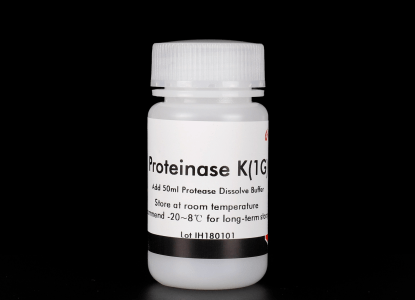
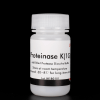
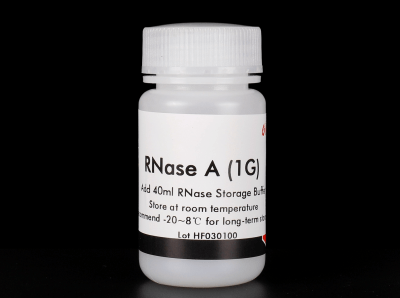

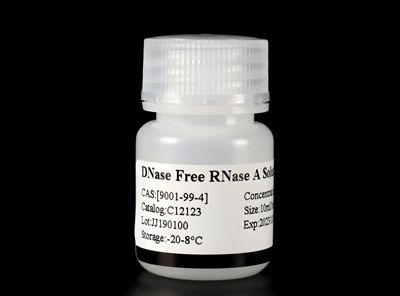
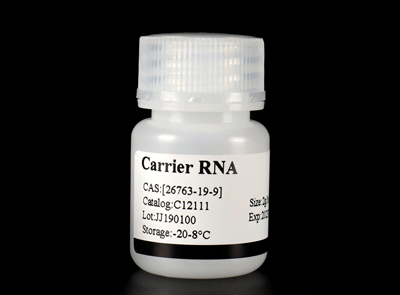
Commentaires
Il n'y a pas encore de critiques.